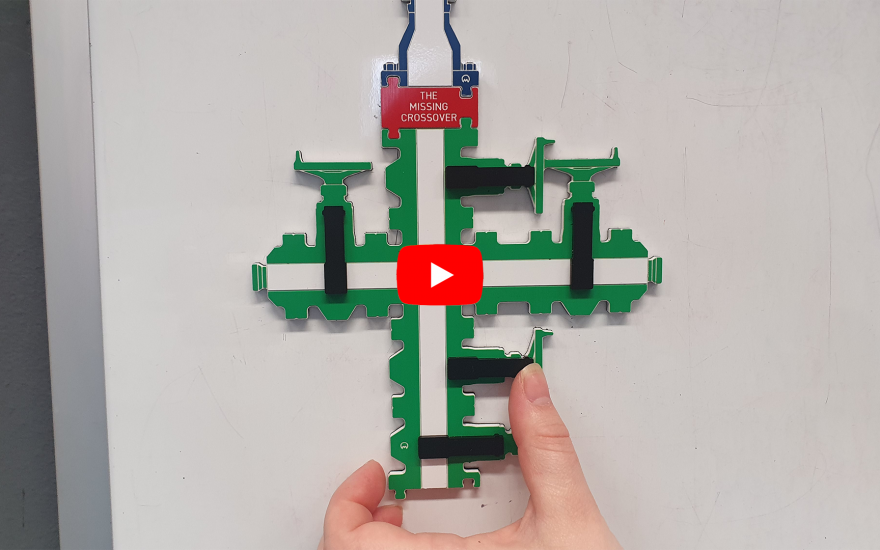
𝗛𝗮𝘃𝗲 𝘆𝗼𝘂 𝗵𝗲𝗮𝗿𝗱 𝘁𝗵𝗲 𝗼𝗻𝗲 𝗮𝗯𝗼𝘂𝘁 𝘁𝗵𝗲 𝗺𝗶𝘀𝘀𝗶𝗻𝗴 𝗰𝗿𝗼𝘀𝘀𝗼𝘃𝗲𝗿??
We all know that preparation is the foundation for a successful operation….
Back in the day, crossovers (missing, wrongly specified, uncertified or damaged) could be a source of operational upset (eh, Nigel!). The costly and disruptive experience gained by those directly involved generally meant it would be unlikely that they would ever repeat such a lack of preparation. Checklists and similar procedural tools help greatly, but how can we coach, practice or simulate such a critical step?? With a little thought and simple physical props, the critical steps in preparation and the operation sequence can be demonstrated, practiced and briefed. Full-scale or digital simulators provide enormous scope for operational scenarios – but are limited and typically light on representing the preparation stage. Used alongside simulators in a crew setting, physical props can help ensure we are coaching to avoid the kind of problems that caught us out back in the day!
